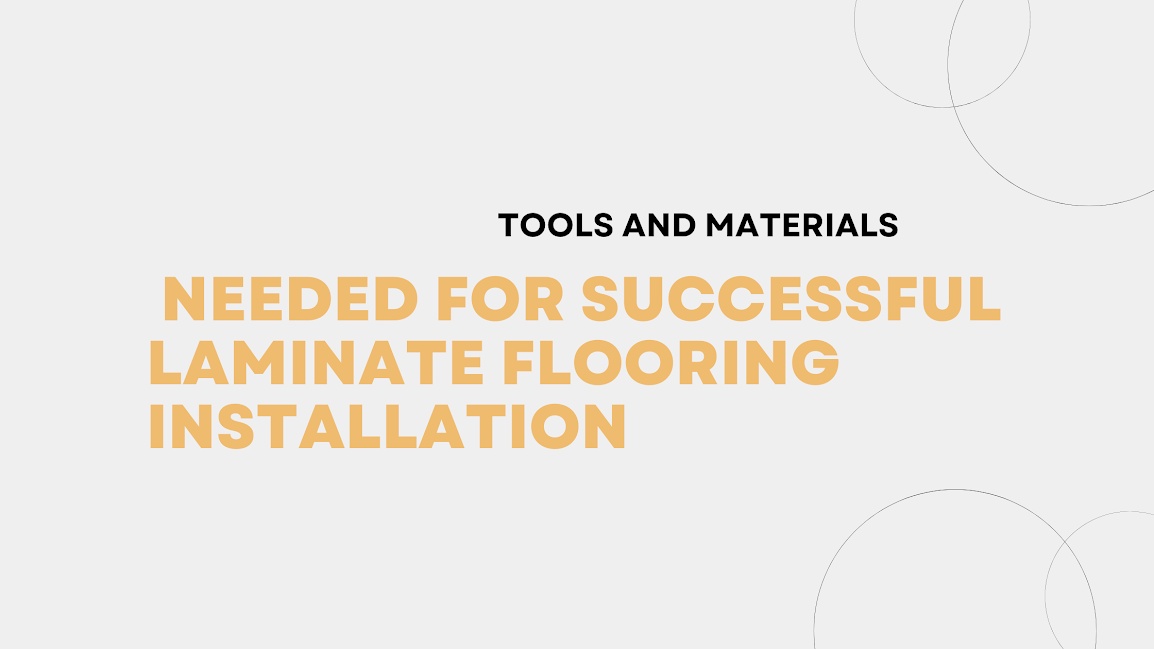Laminate flooring installation is a popular choice for homeowners looking for a durable and cost-effective flooring solution. When embarking on a laminate flooring installation project, it's crucial to have the right tools and materials at hand to ensure a successful outcome.
In this article post, we will explore the essential tools and materials needed for a seamless laminate flooring installation. Additionally, we will touch upon the importance of proper tile flooring installation for comparison purposes.
Tools for Laminate Flooring Installation:
Tape Measure: Accurate measurements are essential for a precise and professional-looking laminate flooring installation. A tape measure allows you to measure the dimensions of the room and plan the layout accordingly.
Level: A level is used to check the flatness and evenness of the subfloor, ensuring a stable foundation for the laminate flooring. It helps identify any uneven areas that need to be addressed before installation.
Saw: A quality saw, such as a circular saw or a jigsaw with a fine-toothed blade, is necessary for cutting laminate flooring boards to the desired size and shape. This tool ensures clean and accurate cuts.
Underlayment: An underlayment serves as a moisture barrier and provides cushioning between the subfloor and the laminate flooring. It helps reduce noise and enhances the overall comfort of the flooring.
Tapping Block and Pull Bar: These tools are used during the installation process to tap and secure the laminate flooring boards together. The tapping block ensures a tight fit between the boards, while the pull bar helps in connecting boards in tight spaces.
Spacers: Spacers are used to maintain the recommended expansion gap between the laminate flooring and the walls. This gap allows for natural expansion and contraction of the flooring due to changes in humidity.
Materials for Laminate Flooring Installation:
Laminate Flooring: Choose high-quality laminate flooring that suits your style and fits the intended space. Laminate flooring is available in a wide range of colors, patterns, and textures, allowing you to achieve the desired look.
Adhesive or Click-Lock System: Depending on the type of laminate flooring chosen, you may require adhesive for gluing the boards together or a click-lock system that allows for easy installation without the need for additional adhesives.
Moisture Barrier: In areas prone to moisture, such as basements or bathrooms, a moisture barrier is crucial to protect the laminate flooring from potential water damage. This barrier acts as an additional layer of protection against moisture seepage.
Transition Strips: Transition strips are used to create a smooth and seamless transition between different types of flooring, such as laminate and tile. They provide a finished and aesthetically pleasing look to the flooring installation.
In the end, having the right tools and materials is essential for a successful laminate flooring installation. However, it's important to recognize that proper use of these tools requires expertise and experience. To ensure the best outcome, it is highly recommended to seek the services of professional laminate flooring installation providers. They have the knowledge and skillset to utilize these tools effectively, ensuring precise cuts, accurate measurements, and proper installation techniques.
By entrusting your laminate flooring project to professionals, you can have peace of mind knowing that the right tools and materials will be used to create a beautiful and long-lasting flooring solution.


No comments yet